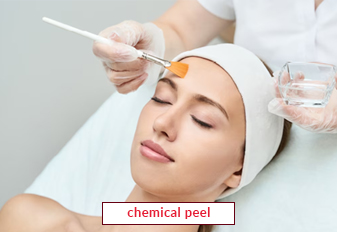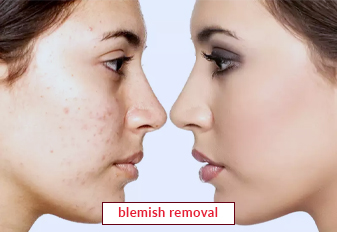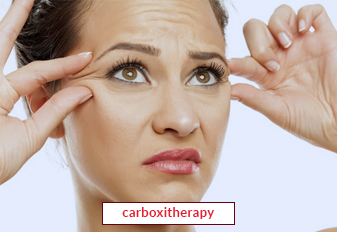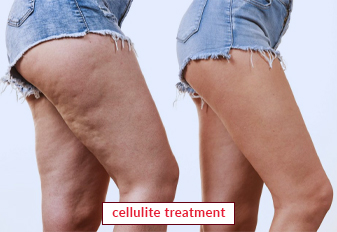Chemical Peel

A chemical peel is a popular cosmetic procedure designed to improve the texture, tone, and overall appearance of the skin. It involves the application of a chemical solution to the skin, which causes controlled exfoliation and removal of the outer layers. Chemical peels are highly effective in addressing various skin concerns, such as wrinkles, acne scars, hyperpigmentation, and uneven skin tone. In this article, we will explore the concept of a chemical peel, its significance in dermatology, and the procedure involved in this transformative skin treatment.
Book an Appointment
About Chemical Peel
Chemical peel is a non-invasive or minimally invasive procedure that involves the application of a chemical solution to the skin's surface. The chemical solution contains different ingredients, such as alpha-hydroxy acids (AHAs), beta-hydroxy acids (BHAs), or trichloroacetic acid (TCA). These solutions work by exfoliating the outermost layers of the skin, stimulating cell turnover, and promoting the growth of new, healthy skin cells.
Procedure of Chemical Peel
- Consultation: Before undergoing a chemical peel, it is essential to schedule a consultation with a dermatologist or a qualified skincare professional. During this consultation, the practitioner will assess the patient's skin type, concerns, and medical history to determine the most suitable type and strength of chemical peel.
- Preparation: Prior to the peel, the skin is thoroughly cleansed to remove any dirt, oil, or makeup. In some cases, a pre-peel regimen may be recommended to prepare the skin and optimise the results of the treatment.
- Application of the Chemical Solution: The chemical solution is carefully applied to the skin using a brush or a cotton pad. The solution is evenly distributed, ensuring complete coverage of the targeted areas. The practitioner may apply multiple layers of the solution, depending on the desired depth of the peel.
- Tingling or Mild Discomfort: Once the chemical solution is applied, the patient may experience a tingling or mild burning sensation. This is normal and temporary. The practitioner may use a fan or cold air to minimise any discomfort during the procedure.
- Neutralisation and Post-treatment Care: After the appropriate time, the chemical solution is neutralised or removed using a neutralising agent or water. The skin is then soothed with a cool compress or a calming mask. The practitioner will provide post-treatment instructions, which may include avoiding sun exposure, using gentle skincare products, and applying moisturiser and sunscreen.
Healing and Results: Following a chemical peel, the treated skin will undergo a healing process, which typically involves redness, peeling, and mild flaking. The downtime and recovery period depend on the depth and strength of the peel. Over time, as the skin heals, new, fresh skin cells will emerge, revealing a rejuvenated complexion with improved texture and tone.
Require Assistance?
Get A Quick Callback From Our Healthcare Experts






